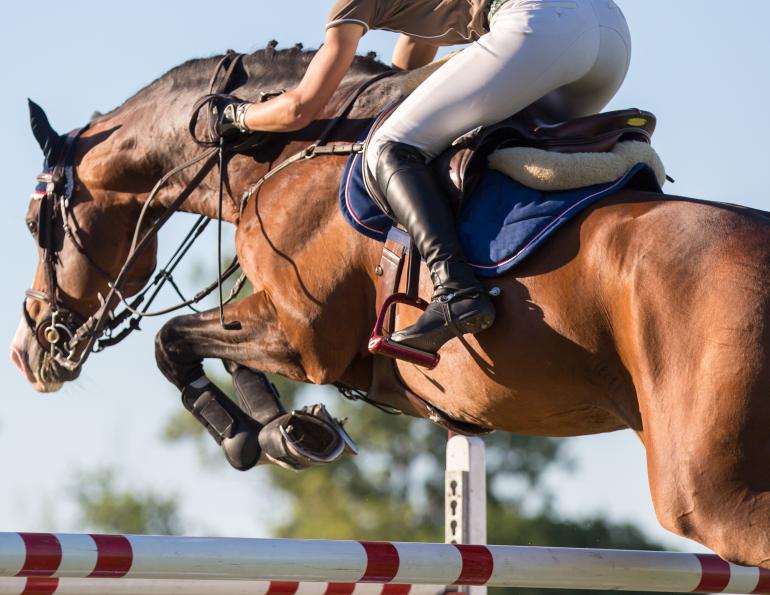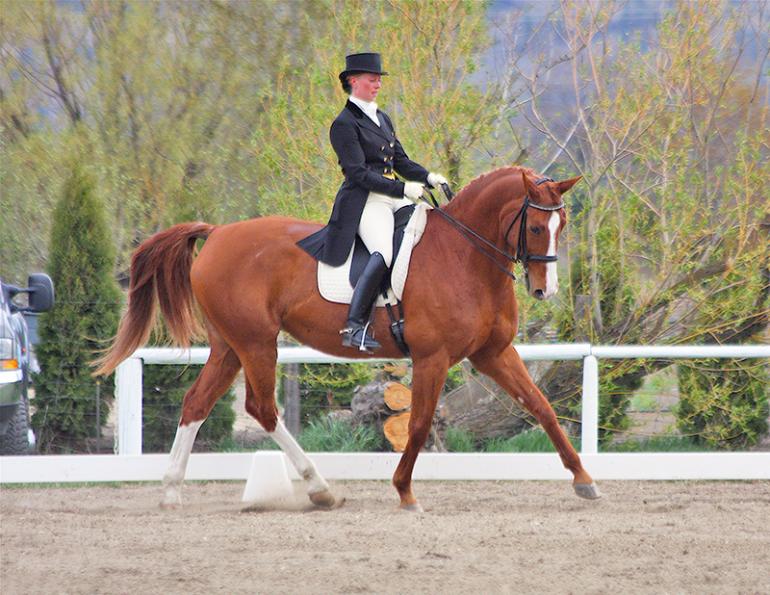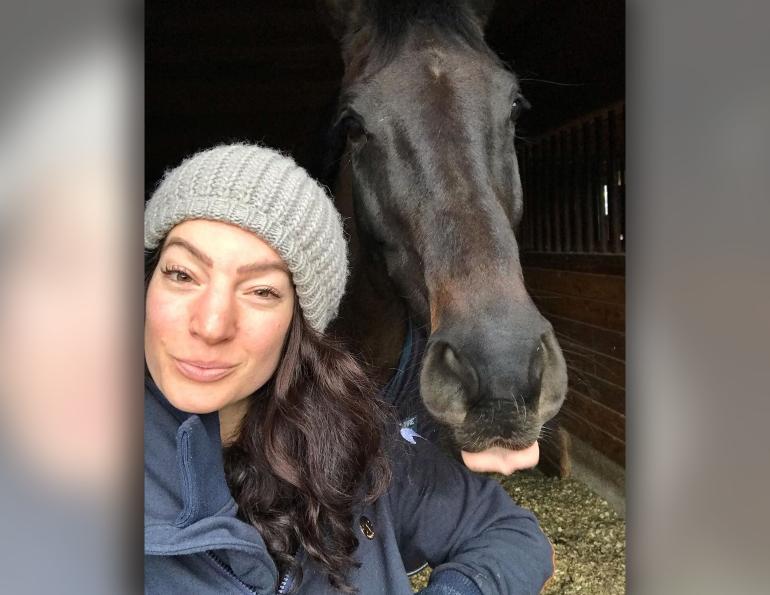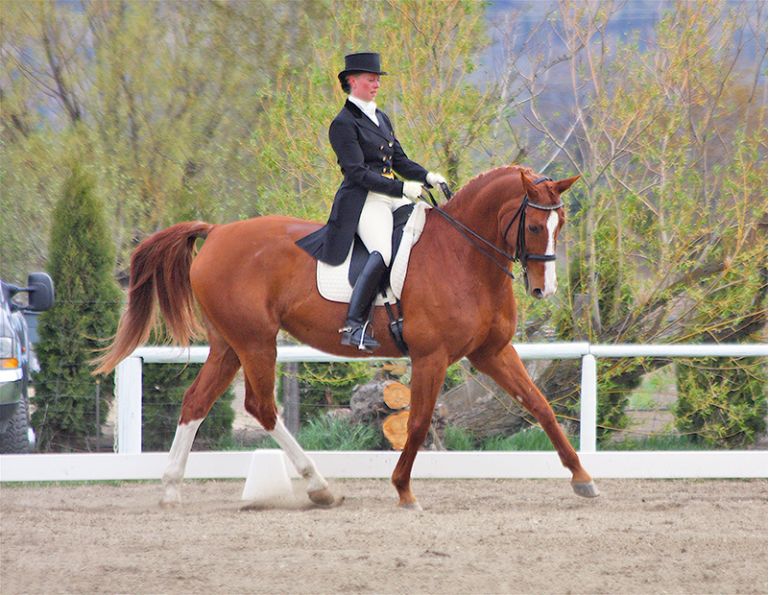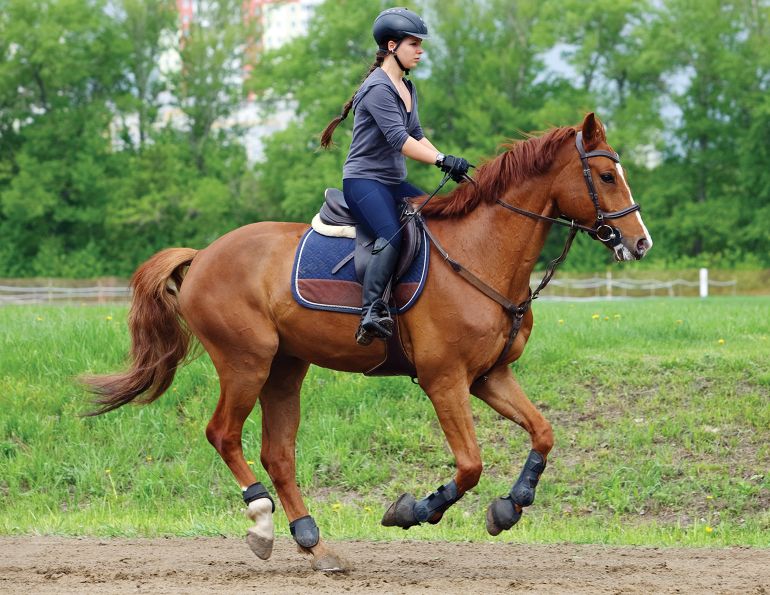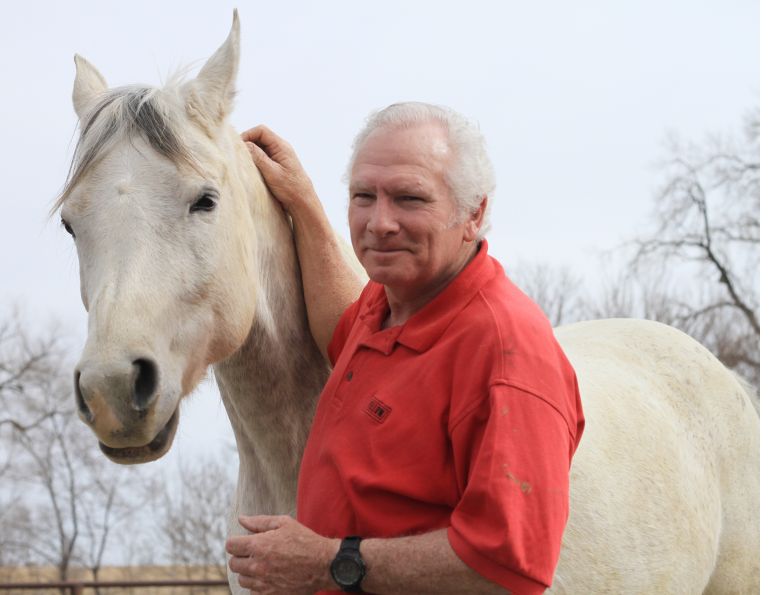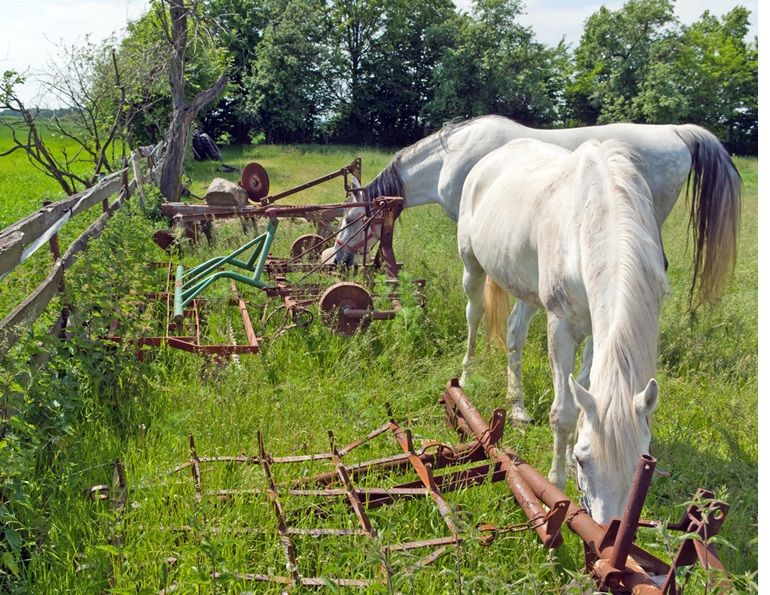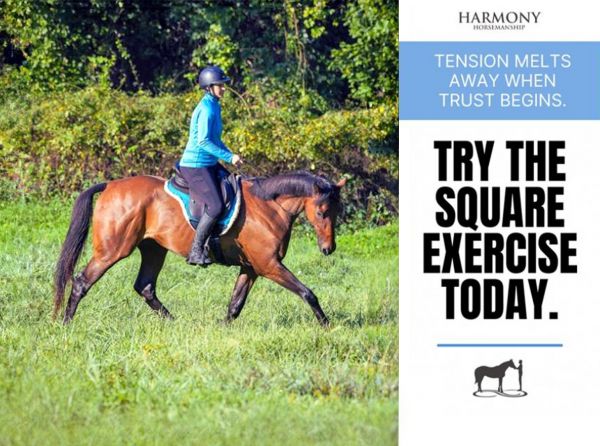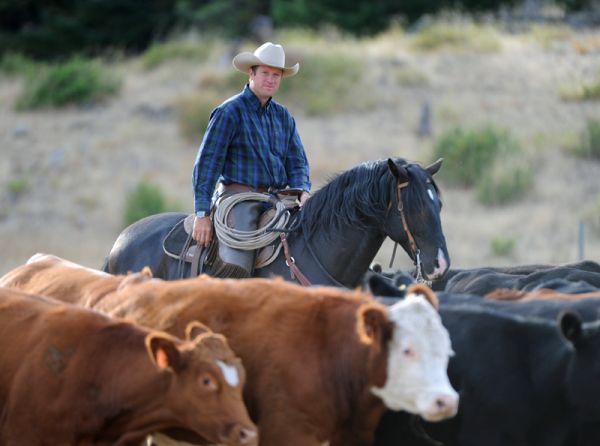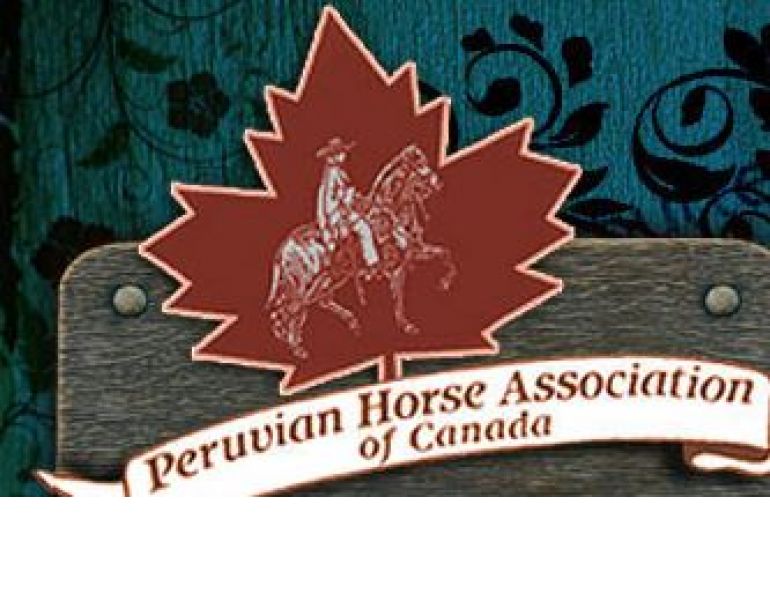By Jodie Santarossa, DVM, CVA, CERT
There is a saying in veterinary medicine: “When you hear hoofbeats behind you, look for horses not zebras.” This maxim, adapted from the original coined by American medical researcher Dr. Theodore Woodward, suggests that common events are, well, common, and one should look for the expected cause first rather than the exotic.
When it comes to training related injuries, again, look for obvious reasons first. Most training related injuries are common and very preventable provided there is an understanding of the biomechanical demands of the particular discipline; meticulous attention to the horse’s feet, teeth, tack, and food, which are the pillars upon elite equine athletes are built; and a collaborative, integrated team approach to building and developing individualized training and maintenance programs.
Recent years have seen tremendous advances in the field of equine sports medicine, particularly in the area of biomechanics. Emerging research has provided valuable insight into how structure relates to function, which has heightened our understanding of how horses move, mechanically speaking, and the ways physical forces influence movement. The Saunders Comprehensive Veterinary Dictionary defines biomechanics as the application of mechanical laws to living structures. Many forms of lameness result from a failure to take basic biomechanics into account while supporting basic equine health and designing appropriate training and maintenance programs. If we understand the physical forces related to a particular equestrian discipline, we can then mitigate many of the associated risk factors to prevent or minimize the occurrence of training related injuries, and tailor our programs to use the skills of equine health professionals in a more efficient, effective, and integrated way.
The most common musculoskeletal injuries of working horses are:
- Soft tissue injuries, including tendon and ligament sprain and strain;
- Joint inflammation or arthritis;
- Stress or chip fractures;
- Sore, tight muscles and muscles in spasm; and
- Foot pain or caudal heel syndrome (also referred to as navicular syndrome).
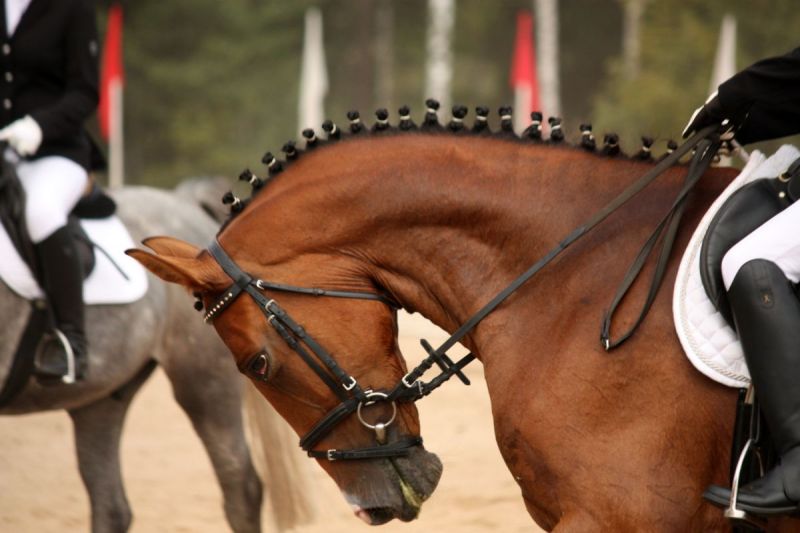
Training methods that force a horse to move in an unnatural way, such as riding in a state of hyperflexion for long periods without allowing the horse to stretch and relax the back and neck, can put him at greater risk for musculoskeletal injuries. Canstock/Virgonira
The particular location of injury is generally discipline-specific, as the stresses placed on a horse have a direct relationship with the type of activity we ask him to perform, or with some imbalance in any of the basic pillars. Actions such as jumping, working at high levels of collection, and performing tight turns and small circles are especially troublesome as pathoanatomical forces, specifically rotational forces, are introduced through hinge joints. These types of biomechanical forces occur in most equine disciplines, but regardless of the discipline, lameness is the single most common reason that horses lose training days (1).
In general, horses are at greater risk for musculoskeletal injuries due to increasing work level and intensity, poor footing, and lack of fitness. Equally detrimental are certain training methods, such as forcing the horse into draw reins or a training rig for long periods without allowing the horse to stretch and relax his back and neck. Training regimes that fail to diversify, such as the jumper that only jumps and does little flat work, or the racehorse that only gallops, can also be problematic. Detrimental training regimes over-train and under-fit by failing to concentrate on other aspects of fitness including strength, suppleness, stamina, and speed. Another contributing factor is selecting an animal that simply does not have the conformation for the task at hand; we should not ask a horse to do something he is not built to do. A well balanced horse has a better chance of moving efficiently, resulting in less stress and a lower likelihood of injury. However, even with the appropriate sport-specific conformation, every equine athlete will be negatively impacted by poor shoeing practices, insufficient dental work, poor or inappropriate diet, unsuitable or ill-fitting tack, rider asymmetry, and an artificial environment such as lack of turnout, poor air quality, and a small, isolated living space.
There are many opportunities to incorporate preventative measures with respect to the basic pillars of building better athletes (feet, teeth, tack, food, and training and maintenance), and these measures can be applied to horses of all ages and disciplines. Van Weeren et al. reported that the manner in which a young horse is raised influences strength and future soundness. When it comes to exercise regimes, continuous pasture turnout was found to be superior to any other exercise regime for its positive effects on bone, cartilage, and soft tissue development. By comparison, a group confined to box stalls actually had retarded development of some tissue components, particularly cartilage (2). Further research found that appropriate exercise in young horses may lead to lower incidence of tendon injuries as adults (3). Overprotective housing scenarios may not be in a foal’s best interest; instead, consider access to turnout terrain that is safe but challenges the growing foal’s musculoskeletal and nervous system development.
Related: Common Hoof Problems
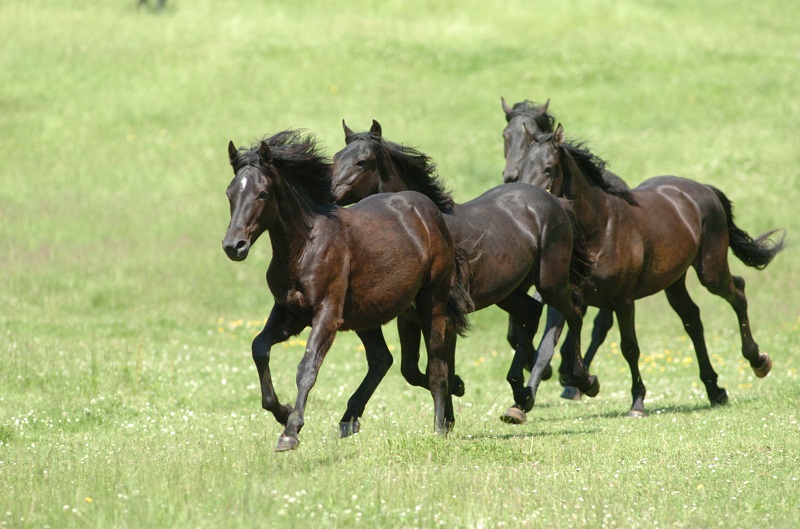
Research has found that continuous pasture turnout is superior to other exercise regimes in terms of positive effects on bone, cartilage, and soft tissue development. Young horses that receive appropriate exercise may have a lower incidence of tendon injuries as adults. Photo: Robin Duncan Photography
Foot and shoeing imbalances are also major contributors to lameness. The foot should be balanced from medial to lateral, and the toe angle must be correctly conformed and in line with the horse’s pastern angle and general conformation. The long toe, under-run heel syndrome with accompanying lack of heel support should be avoided at all costs. A long toe and under-run heel cause excessive stress and strain on the heel region, which can result in injury to the navicular area, the distal tendons (including the deep digital flexor tendon and distal impar ligaments), and all joints in the limb. Excessive heel strain can also have an effect on the digital cushion and lateral cartilage structures, impairing their function as shock absorbers and leading to generalized foot soreness.
Recent studies report that a long toe may have effects even higher up the hind limb. Researcher Richard A. Mansmann found that excessive toe length in hind feet may be accompanied by pain in the gluteal region; however, corrective shoeing helped all horses within days or weeks (4). An objective evaluation of foot symmetry and balance can be easily accomplished with a T-square, an angle measure, and a set of calipers. More advanced imaging techniques, including survey radiographs that reveal the proper toe and heel angle, and determine medial-lateral balance by showing the actual position of the coffin bone within the hoof capsule, can be performed by your veterinarian.
Footing is equally important for preventing training related injuries, but is often more difficult and costly to deal with. The key considerations are good drainage and a level, compacted base that is impenetrable to hooves and water. In general, footing that is too thin does not provide sufficient concussive protection, while footing that is too deep results in excessive strain on tendons and suspensory ligaments. Surface consistency is crucial to the horse’s ability to adapt to that surface; this is best achieved through routine maintenance by a skilled individual with sufficient experience and understanding of the effects of footing on the horse’s biomechanics during a specific sporting event. Try, whenever possible, to avoid bad footing – ground that is hard, slick, deep, or uneven.
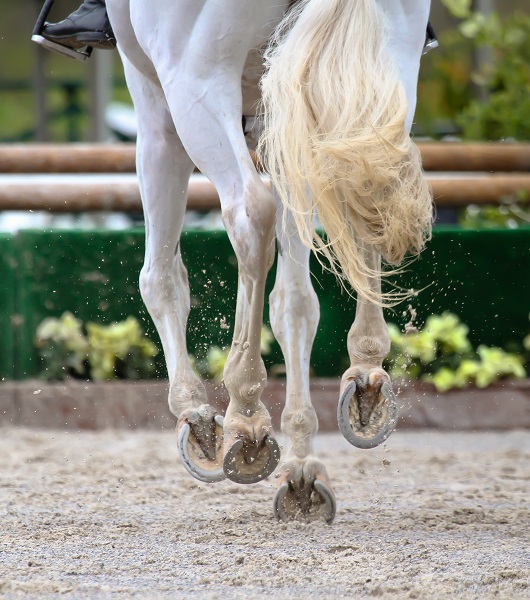
Good footing with a consistent surface that is neither too deep nor too thin is crucial to injury prevention. Bad footing – ground that is hard, deep, uneven, or slippery – should be avoided whenever possible. Photo: S. Carter/Flickr
In developing athletes with the goal of injury prevention in mind, special attention must be given to equine dentistry. An imbalance in any region of the oral cavity, incisors, molars, or temporomandibular joint will affect the soft tissues of the head and neck, and may result in compensatory effects on the rest on the musculoskeletal system. A thorough dental exam should include a visual assessment of the oral cavity, evaluation of facial symmetry, joint mobilizations to evaluate for any possible restrictions or blocks, and palpation of pain or sensitivity in the masseter muscle, hyoid apparatus, and temporomandibular joint. Abnormal findings suggest the need for a performance alignment float by an experienced equine dental practitioner.
When working towards injury prevention, it is important to consider each equine athlete as an individual and design a personalized training and maintenance program for the horse based on his conformation and the biomechanics of his discipline. Knowing the subtleties of the equine athlete’s individual personality and demeanour will also make it easier to detect disease, recognize when you are pushing him past his limits, and facilitate early detection of impending problems. Many changes in attitude and behaviour, including decreased willingness to work, are actually related to pain and discomfort, and signal imminent problems. Slow and gradual increases in training level and intensity ensure that the horse will develop the proper musculoskeletal and nervous function to complete the task at hand, and will minimize the risk of training related injuries. Building balanced cross-training schedules that incorporate strengthening, stretching, and suppling exercises is key. Facilitating biomechanically correct movement is also important; this can be accomplished through core development using a variety of ground exercises that activate the postural stabilizing muscles and the abdominal muscles. In addition to basic stretching and strengthening exercises that will benefit any athlete, a trained practitioner can assist in the development of a program that targets the specific biomechanical needs of an particular equine discipline.
Related: Back Pain in Sport Horses
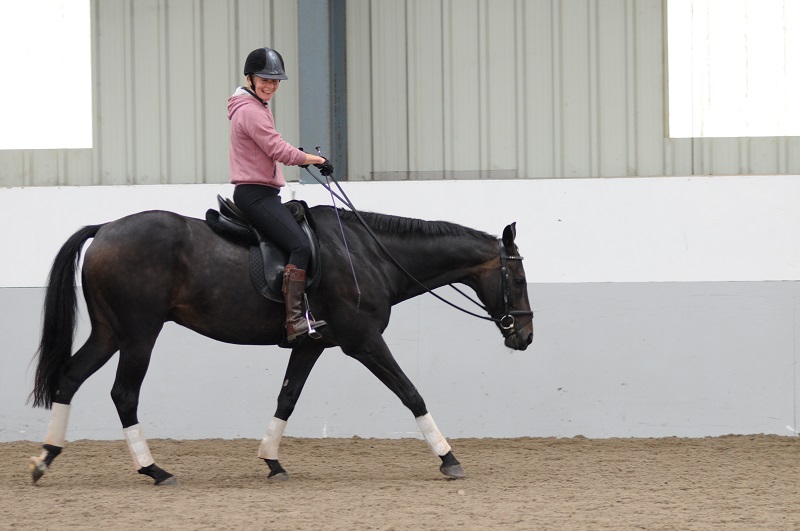
A sufficient warm up and cool down as part of each training session will greatly reduce your horse’s chances of suffering a related injury. Photo: Steven Lilley/Flickr
By objectively monitoring overall cardiovascular fitness using heart rate monitors we can ensure that our equine athletes are not fatiguing and running the risk of associated missteps or failures. Consulting a nutritional expert is essential, since fatigue can also have a nutritional basis, as can some lamenesses and performance limiting syndromes. To avoid fatigue, increase the intensity of your horse’s work gradually, ensure that he is fit enough for what you are asking, and avoid overtraining by spacing out demanding work sessions, shows, competitions, and races to allow him enough time to recover. Avoid repetitive circling as it stresses joints, muscles, and tendons. The importance of the basic practices cannot be overstated, and these include:
- A vigorous and thorough grooming;
- Warming with therapeutic blankets or a solarium;
- Time to warm up under saddle;
- A sufficient cooling down routine including stretching every other day;
- Dynamic stability exercises to facilitate core development;
- Attention to overall foot health; and
- Sweating, mudding, painting, icing or cold hosing, and bandaging as needed with emphasis on particular problem areas or on muscle groups of greater importance for the specific biomechanics of the job.
Even with ideally balanced feet, teeth, tack, food, and training programs, our equine athletes will still need to be maintained through the course of a season as routine wear and tear adds up. An individualized maintenance program may include therapeutic blankets, infrared solariums, water spas or treadmills, or magnetic or ceramic products. Such a program certainly also includes a team of devoted therapists with differing skills including acupuncture, chiropractic, massage, myofascial, osteopathy, and rehabilitation. The frequency of the maintenance schedule will depend on the individual horse and his overall health and wellness, injuries, performance level, and goals.
With emerging research expanding our knowledge of the causes of common and preventable injuries, and better training and maintenance programs for our equine athletes, we can look forward to greatly reducing the risk of training related injuries in the future.
References
1. Kaneps, Andris J. Preventing Injuries to Your Horse During Training. www.newenglandequine.com
2. van Weeren et al. Proceedings of the AAEP 2000; 46:29-35
3. Smith et al. Equine Veterinary Journal Supplement 1999; 30:201-209
4. Richard A. Mansmann et al. Journal of Equine Veterinary Science 2010; 30:720-726
Related: Movement Science
Related: When Horses and Riders Hurt Themselves
Dr. Jodie Santarossa graduated in 2002 from the Western College of Veterinary Medicine in Saskatoon, Saskatchewan. She went on in 2007 and 2008 to complete the International Veterinary Acupuncture Society course for veterinarians, and in 2012 commenced training as a Certified Equine Rehabilitation Therapist at the Animal Rehabilitation Institute in Florida. Her current practice, Brightside Vet and Consulting, is an exclusively equine sports medicine practice serving the Edmonton, Alberta, area. www.brightsidevet.ca
Main Photo: Shutterstock/Catwalk Photos



